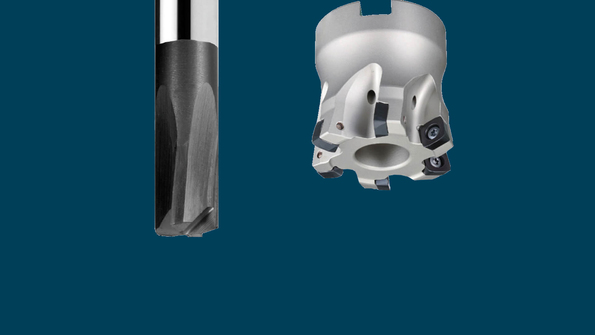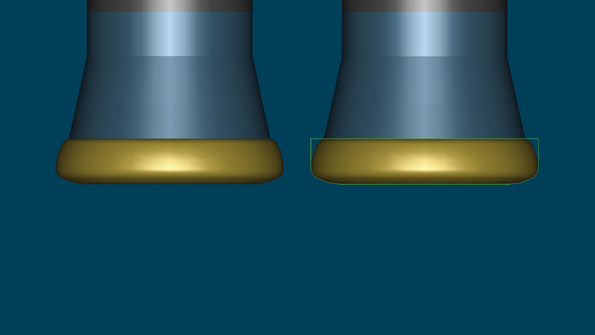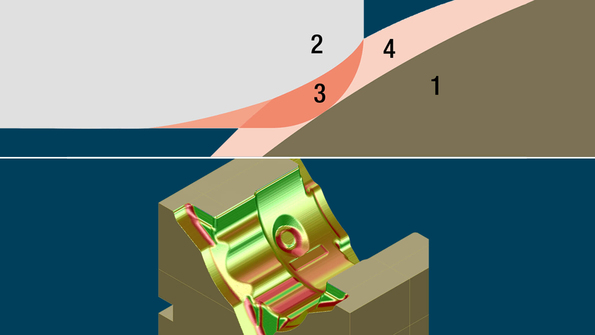-
Software
-
CAM software
- Tebis Automill
- CNC programming
- CNC automation
- CNC simulator
- Multiple setup
- Robotic machining
- CNC drilling
- Deep-hole drilling
- Combined turn-milling
- CNC turning
- Turn-milling
- 2.5D milling
- 3D milling
- 5-axis milling
- Slot milling
- Trimming
- HPC milling
- HFC milling
- Circle-segment cutters
- Sinker EDM
- Wire EDM
- 3D laser cutting
- Laser hardening
- Laser weld cladding
- CAD software
- CAQ software
- MES software
- Products
- Stories about parts
-
CAM software
- Services
- Consulting
- Sectors
- References
- Company
- News

-

Faster manufacturing with HFC tools
Suitable for roughing and prefinishing
 Two examples of high feed-rate cutters for HFC milling: A tool with four edges (left) and one with indexable inserts (right).
Two examples of high feed-rate cutters for HFC milling: A tool with four edges (left) and one with indexable inserts (right).High feed cutters or HFC tools (high feed cutting) enable high cutting performance with high feed rates and cutting speeds on modern milling machines. These high feed cutters and high-performance cutters have a special cutter geometry with multiple cutting edges. They’re available with and without indexable inserts.
These tools can be implemented extremely efficiently in combination with Tebis for both roughing and prefinishing: NC programming in Tebis is always performed using the real cutter geometry, and the maximum possible residual stock is removed – the optimal preparation for final finishing.
PreciseMaximum material removal with precise calculation of residual stock • High-precision NC pathsEfficientMachining time reduced by up to 50 percent • Lower manufacturing costs because of longer tool lifeReliableHigh process reliability with digital twin of the actual toolPrecise calculation of residual stock

The significant advantage of HFC cutters in Tebis: Because the actual contour of the tool is used for programming, milling areas up to the residual stock are precisely calculated. The actual tools can be represented by a one-to-one digital twin in the virtual tool library.
That makes the difference
Conventional programming uses toroidal substitute geometries (3) instead of the actual tool contour (2). Geometry (1) is not correctly contacted. Material contact cannot be accurately defined, and residual stock will remain (4).
In Tebis, the actual tool contourof the HFC tool (2) is used for programming. Geometry (1) is contacted with high precision. After prefinishing, the only material remaining is in areas that cannot be machined with the selected tool. This allows HFC tools to be optimally employed, and not just for roughing but also for prefinishing.


Practical examples from all sectors
View video / contact formPlease select the Preference cookies to activate the display.Activate cookiesHFC milling in a practical test: High-feed cutters are especially cost-effective if they are implemented correctly in roughing, finishing and residual stock machining. This video demonstrates how machining time with HFC cutters can be reduced by up to 50 percent with the complete package of Pokolm high-feed cutters and Tebis CAM software.
View video / contact formPlease select the Preference cookies to activate the display.Activate cookiesThis water jacket mold was manufactured with Tebis NC programs using HFC tools and high-precision contact geometry on a 5-axis GROB G550 machine with the new MMC Hitachi Tool GF1 barrel cutter with indexable inserts.



